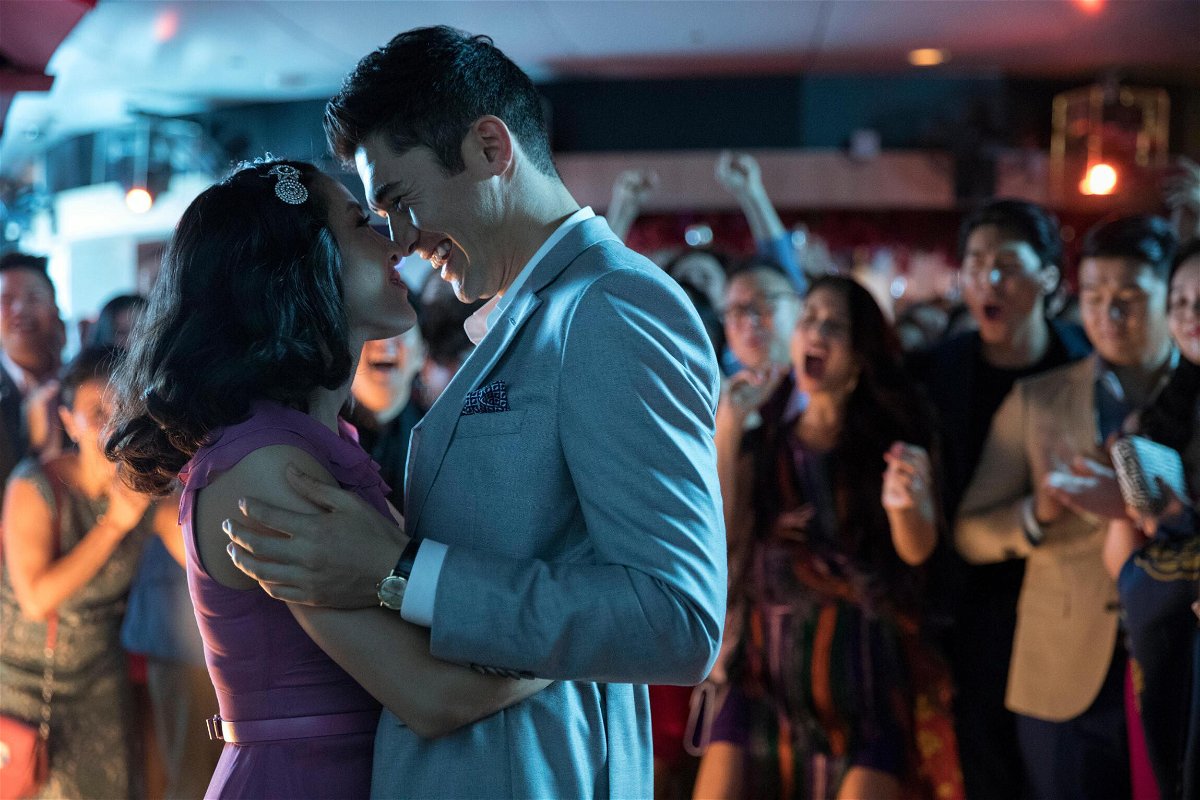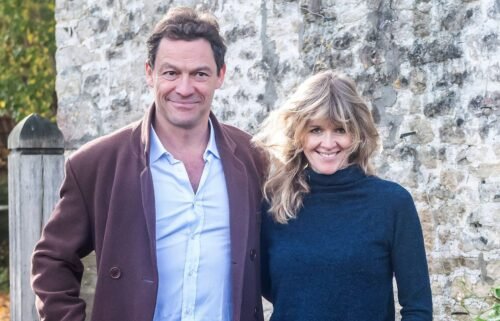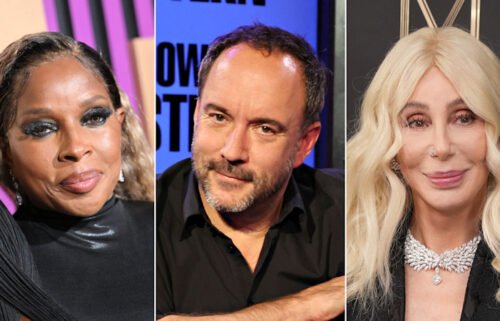From ‘The Joy Luck Club’ to ‘Crazy Rich Asians,’ a new book hopes to ‘fill in the blanks’ of Asian American pop culture

The authors of "RISE" felt that so much of Asian American pop culture that came before "Crazy Rich Asians" remained hidden.
By Harmeet Kaur, CNN
Jeff Yang, Phil Yu and Philip Wang have been chronicling the progress of Asian America for decades.
Yang published the now defunct A. Magazine before going on to write for The Village Voice, The San Francisco Chronicle and other publications (he is now a CNN Opinion contributor). Yu has been blogging about Asian American mainstream media representation under the moniker Angry Asian Man. Wang and his filmmaking partners at Wong Fu Productions tell Asian American stories they feel have been missing from pop culture.
But in the last few years, they felt that conversations about Asian American pop culture seemed to begin with “The Joy Luck Club” and skip right to “Crazy Rich Asians,” without much thought to everything that came in between. Forty-two percent of Americans couldn’t name someone famous from the community. The movies, the music and the subcultures that were so foundational to them simply weren’t visible — even to many Asian Americans.
“RISE: A Pop History of Asian America from the Nineties to Now” is their attempt to change that. The book, released Tuesday, spans more than 400 pages, and charts the evolution of Asian American pop culture over the last three decades through comics, essays, interviews and cheeky illustrations.
With the help of dozens of contributors, the book’s authors explore everything from the social network Asian Avenue to Asian grocery stores to the Asian Americans that dominated YouTube. They delve into the college bhangra competition circuit and the Filipino American DJ scene. They invite the creators of “Harold & Kumar” to discuss the franchise’s legacy and ask Jeremy Lin to reflect on Linsanity. And yes, they cover “The Joy Luck Club” and “Crazy Rich Asians,” too.
CNN spoke to Yang, Yu and Wang about why they think Asian American pop culture was born in the ’90s, how they decided what would go into the book and what they hope readers will take away from it.
This conversation has been edited for length and clarity.
How did the idea for the book come about?
Philip Wang: Around 2019, after “Crazy Rich Asians,” I would talk to Jeff on the side about how it was such a great moment for our community and for Asians in Hollywood. But one thing that always bothered me about that period of time was that there were all these articles about how this was the first Asian [American] movie in 25 years with an all Asian cast.
That’s true, but there’s a really big asterisk next to that. There has been a lot going on in the community for so long. We have been making our films. We have been fighting this fight. So Jeff really felt inspired and he’s like, “Hey, let’s actually turn the work that we’ve done these last 30 years into a book.”
Phil Yu: When we were conceiving of the book, we were coming off this moment of hyper visibility, with [the success of] “Crazy Rich Asians” and “Parasite” having won the Oscar for best picture. But we were also seeing this other side of hyper visibility — this spike in violence against Asians, particularly tied to the pandemic. These things were colliding, and we wanted a place to voice our concerns.
So much of the way that Asians are perceived is because someone else has been writing the rules of what it means to be Asian American and Asian in this country. We wanted to create our own narrative where we have some agency in the way that it’s told.
How did you land on the ’90s as the starting point for Asian American pop culture?
Jeff Yang: The pre-’90s was an era in which Asian Americans didn’t exist politically or culturally with any kind of real substance. Then by the ’90s, with the rise of diversity and multiculturalism, Asian Americans started popping up and showing up in places. This is where that real journey of our own self recognition begins.
There were a lot of Asian Americans who, even as they rose professionally, were saying to themselves, “I know I’m Asian American, but that’s not how I define myself. I don’t want to be seen as an Asian American writer, an Asian American journalist, an Asian American actor. I want to be seen as an actor who happens to be Asian American.” The perception was that being Asian American was a liability that would typecast you, that would prevent you from advancing into “mainstream.”
Thirty years-plus later, we’re at a place now where all these people are coming out of the woodwork saying, “Yes, I’m Asian American.” And more than that, [they’re saying], “I want to elevate other Asian Americans, and I want to make creative and cultural and political work around our community.” By going from the beginning to now in this book, you get that sense of a community awakening to itself and finally feeling like we can be a little bit more proud of who we are.
Phil Yu: To rise, if you will.
This book includes an expansive range of topics and experiences. How did you decide what would make it into the book?
Phil Yu: There are these little milestones that nobody gave press to back in the day, but that were a big deal to us. We wanted a place where Asian Americans could see and recognize [those things] that were so important or formative to them — this little corner of the internet or this little video clip that was so cool. A lot of [the process] was finding those things and giving shine to that.
Philip Wang: We made a very concerted effort to be as inclusive as possible. We tried to make sure that it wasn’t all East Asian, all male centered, not all entertainment. It would have been very easy for us to slip into all things about Asians in Hollywood and representation, but we made sure to cover politics and fashion and food and the college scene and things like that.
Jeff Yang: There’s also kind of a deeper context for how we organized it, why we focused on these last 30 years and how we wanted to respect the broad diversity of Asian America while finding the paths that bring us together.
A lot of it has to do with the idea of Asian America, the idea of some sort of pan-ethnic common community was something that was invented in 1968. Those of us who were born in the late ’60s and early ’70s and who came of age in the early ’90s were the first wave of people to be asked all the time what it meant to be Asian American — to be told we’re Asian American without knowing what it meant. And we spent the next 30 years trying to fill in the blanks.
That cohort of people were the ones who finally figured out that the best way for us to actually answer that question was to seize hold of the story ourselves — to create stories and narratives and representations of ourselves that answer that question so we don’t have to. That was the story of our pop cultural rise.
It’s poignant that the book, which is a celebration of what Asian Americans have created and achieved in the last three decades, is landing at a time when the community is mourning the loss of Christina Yuna Lee, Michelle Go and so many others.
Jeff Yang: I think that is partially coincidence in some ways. But in some ways, it isn’t.
We wanted it to land as both a celebration and a commemoration of all the things that we did to get here. But we also wrote this, in part, because we wanted to be able to retrace our steps in case we ever had to rebuild all of the progress we had made. [We thought that] it might make sense for us to know the things that we were challenged with, the pitfalls we faced, the steps we took to blood, sweat and tears our way over here.
What aspects of Asian American culture captured in the book hit close to home for you?
Philip Wang: The AZN era was a fun one to do just because that was my teenage years. I’m glad we did something on tuner culture also. The reason why “Fast and Furious” is even this billion dollar franchise is because of what a small group of Asians started in Southern California.
Phil Yu: I’m particularly proud of the fact that we reunited the four daughters from “The Joy Luck Club,” four actresses who I revere. That movie was, for some, divisive but also just a monumental moment in Asian American cinema.
Jeff Yang: [I’m personally proud of] this piece called “Stuff Asians Like.” The wild thing about it is that it just starts as a little snowball and rolls downhill into this gigantic thing where people everybody has something to add. It’s tongue-in-cheek to suggest that the material objects we surround ourselves with help define who we are collectively, but there is some truth to that.
It even stretches beyond Asian Americans into other cultures as well. When [Asian Americans] talk about how round Danish cookie tins are found in every Asian home, only you never find cookies in them, Black Americans [also saw themselves in that]. That act of mutual recognition that came out of that piece and other pieces like it in the book are some of the things that are closest to my heart.
Jay Kang’s recent book “The Loneliest Americans,” which ignited a lot of debate among Asian Americans, argues that the politics of Asian America are too often consumerist and preoccupied with issues such as Hollywood representation. Why anchor your book in pop culture?
Philip Wang: It’s not like we’re saying this book is going to solve everything. But it’s a piece that I think will be utilized for a greater narrative, a greater strategy, a greater purpose. I always get frustrated when people are saying, “This is the wrong way [to achieve visibility].” There are many ways, and it’s okay that there are many ways.
Jeff Yang: If you look at the deepest tragedies that have occurred to us — going all the way back to Asian exclusion policies — [the way Asians were oppressed] was almost always hand in hand with propagandist imagery that, to this day, survives in the form of popular culture: The forming of us as alien beings, as diseased vermin, as engagers in practices that were disgusting and vile and unassimilable into the American mainstream. All of these memes — and memes they were — were generated in order to define us in a way that made us permanent outsiders in American culture.
There’s a piece [in the book] which I put together, which shows some of the earliest propaganda images from the 1800s onwards and shows the lineage of how those images still persist today in kids cartoons, comic books, sitcoms and advertising. That propaganda family tree highlights why this isn’t just about [wanting] more Oscars or more superheroes. This is, as much as anything, about recognizing that the imposition of media and imposition of imagery — especially in this digital era — restrain us and repress us as much as political and economic forces.
This book encompasses disparate experiences that not all people under the Asian American umbrella necessarily share. Why do you think it’s worth connecting them into a shared history and culture? Put another way, what is the value of an Asian America?
Jeff Yang: There is a forging experience that being a part of America confers upon us. For Asian Americans, so much of our collective experience is about immigration, especially that generation after immigration. One of the things which we constantly have to remember is that even today, the Asian population in America is growing faster by immigration than it is by birth. So that immigrant locus of identity will always be a big part of our population.
A lot of first generation immigrants may not think of themselves as Asian American, and nor should we force them to. But there is almost always this second generation group, and those kids almost all end up gathering in spaces like college dorm rooms, asking the same damn questions about themselves and sharing similar anecdotes with one another. Those dorm room conversations are what fueled and fed a lot of the stuff that ended up here.
Rather than assessing whether the term Asian American is worth exploring and preserving, we wanted to simply say, “Let’s have the discussion.”
Phil Yu: Asian America is in progress. It is not defined yet. We are still, amongst ourselves, trying to figure out who is Asian American and what does it mean?
This book is a pop history. It’s not the definitive one. [We’re just saying]: Here are a bunch of things that we think that you can throw into this bucket of Asian America. Some of this stuff applies to your experience, some of it does not, but we take an “everybody is included” mentality while we figure this out.
Who is this book for and what do you hope readers will take away from it?
Jeff Yang: I think it’s mostly Asian Americans who actually lived through these decades. There’s no question that a lot of people are going to open up this book, look at stuff in here and say, “Oh my god, I remember this” or “Man, why don’t we still do this?” or “Let’s go karaoke right now.”
Then there’s this other group — the people who are curious about our culture, who have [Asian American] friends or relatives, who are simply curious about culture in general — who will delve into this book because a lot of things they are not familiar with, we are trying to open a door for them to step through and explore. That includes all the pieces about things like Bollywood, AZN culture, import tuning, K-pop, anime, Hong Kong cinema, K-drama — there are all these things that are increasingly defining the experience of being American now that come from our own shared roots.
Philip Wang: This book was made for our community first and foremost. That’s why we didn’t water things down. That’s why we went as deep and as nuanced as we did. That’s who I want to make sure feels seen and feels happy and satisfied and proud of the book first.
Phil Yu: In terms of our collective understanding of Asian American history, the bar is so low. I really hope that people can flip over to any page and be informed and be entertained.
The-CNN-Wire
™ & © 2022 Cable News Network, Inc., a WarnerMedia Company. All rights reserved.



